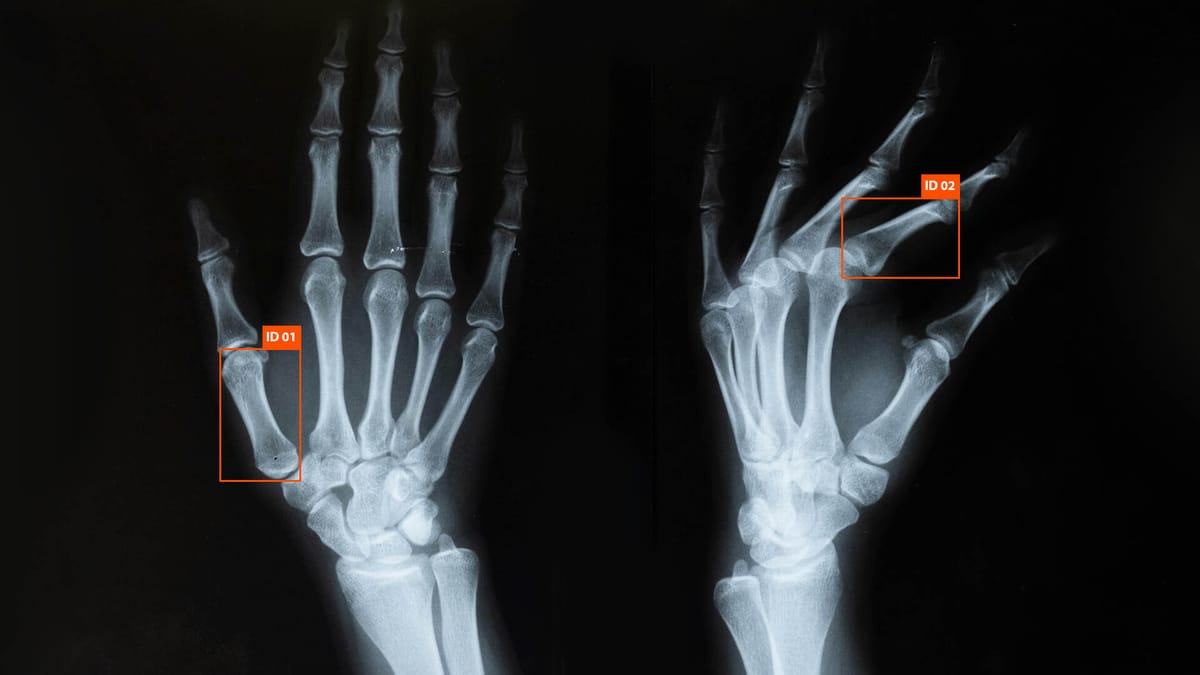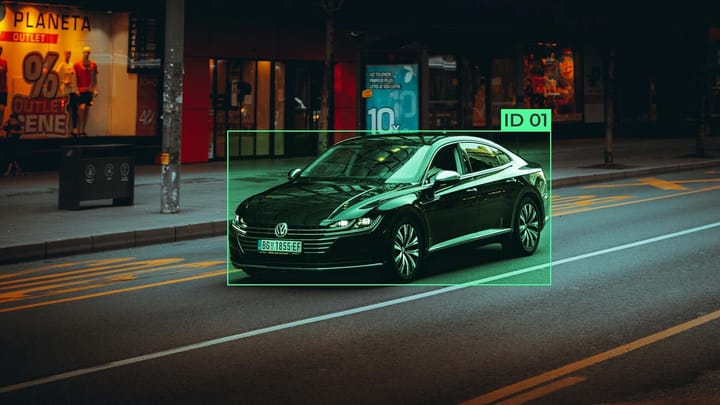X-Ray Annotation: Detecting Threats and Objects in Security Scans

X-ray imaging has become a key tool for screening baggage and personal belongings, with the growing need for efficient and accurate threat detection in environments such as airports, government buildings, and high-security facilities. However, raw X-ray images alone are not enough to ensure security. This is where annotation comes in. By labeling specific objects, materials, or potential threats in an X-ray scan, annotators and machine learning systems can work together to train algorithms that recognize patterns and anomalies that might otherwise go unnoticed.
This task is particularly challenging because X-ray images differ greatly from regular photographs. Objects often overlap, are viewed from unusual angles, or are made of materials that are difficult to distinguish without experience. As a result, the annotation process must be accurate and context-sensitive, often requiring the identification of weapons, explosives, electronics, and household items under various conditions.
Key Takeaways
- Material density analysis creates detailed security images beyond basic shape recognition
- Human-AI collaboration enhances threat detection accuracy in crowded scans
- Continuous learning algorithms adapt to new threat patterns over time
- Color-coded imaging helps separate organic/inorganic materials during inspection
The Science Behind X‑Ray Scanning Technology
The science behind X-ray scanning technology lies in its ability to visualize the internal composition of objects using the unique properties of X-rays. Unlike visible light, X-rays are a form of electromagnetic radiation with high energy and short wavelengths, which allows them to penetrate various materials. When X-rays pass through an object, different materials absorb them at different rates depending on their density and atomic number. Dense objects, such as metals, absorb more X-rays and appear darker on the scan, while less dense materials, such as plastics or organic matter, absorb less and appear lighter.
X-ray scanners in security systems typically use single- or dual-energy imaging. Single-energy scanners create grayscale images based solely on density. In contrast, dual-energy scanners capture two sets of images at different energy levels to distinguish between types of materials, such as organic, inorganic, and metallic substances. Advanced systems can even use computed tomography (CT) by rotating the X-ray source to create a 3D image for more detailed analysis.
The Role of Annotation
While X-ray images capture complex scenes filled with overlapping and closed particles, they do not inherently explain what these objects are or whether they pose a threat. An annotation fills this gap by providing detailed, human-marked instructions that train machine-learning models to interpret visual patterns. Annotators manually mark objects of interest, such as firearms, knives, explosives, or even everyday objects that could be mistaken for threats, using bounding boxes, segmentation masks, or classification labels. These annotations form the labeled datasets needed to train AI to quickly and accurately detect and distinguish between objects.
In addition to simply identifying elements, the annotation plays a crucial role in shaping the model's ability to generalize across different environments. For example, objects can appear from various angles, be partially hidden, or be in disarray. High-quality annotations help models learn object shapes and contextual clues, material characteristics, and risk indicators.
Scope of application
X-rays' ability to penetrate solid objects and reveal internal structures makes them indispensable in environments where visual inspection is limited or impossible. By converting invisible radiation into images that can be interpreted, X-rays provide critical insight into scanned objects' content, composition, or condition. As technology advances, X-rays expand their impact beyond traditional security to areas as diverse as logistics, healthcare, manufacturing, and cultural preservation.
Aviation Security
X-ray annotation is central to airport security systems, where it supports detecting dangerous items such as firearms, explosives, and sharp objects in passenger luggage. Annotated data helps train AI models to recognize threats even if they are partially hidden or appear in unusual configurations. These systems reduce the need for manual screening and improve throughput at checkpoints. They also help human operators by highlighting potential threats in real-time.
Border Control and Customs
At national borders and customs offices, X-ray scanners check vehicles, shipping containers, and personal luggage for illegal substances, contraband, or hidden compartments. Annotation ensures that machine learning models can distinguish between harmless objects and suspicious anomalies in various cargo types. This significantly increases the efficiency of inspections without compromising accuracy.
Postal and Logistics Screening
Mail and package screening relies on X-ray annotation to identify potentially hazardous or restricted items like lithium batteries, explosives, or biological materials. Given the volume of parcels processed daily, AI-driven systems trained on annotated scans can automatically flag suspicious items for further inspection. This speeds up delivery logistics while enhancing safety.
Correctional Facilities
Prisons and detention centers use X-ray scanners to prevent contraband such as drugs, weapons, or mobile phones from entering secure areas. Annotated images help systems learn to detect cleverly concealed items, such as objects hidden inside shoes, food packages, or books. These tools reduce the reliance on invasive manual searches.
Industrial Inspection
In manufacturing and engineering, annotated X-ray images are used for non-destructive testing of materials and components. This helps identify internal flaws like cracks, voids, or misalignments without dismantling machinery or compromising product integrity. AI models trained on such data can spot defects more consistently than the human eye.
Public Event and Building Security
Security personnel at stadiums, concerts, and government buildings use X-ray systems to scan bags and equipment for threats. Annotated data allows AI to quickly analyze contents and flag items that pose a risk, such as weapons or suspicious electronics.
Cultural Heritage and Research
X-ray scanning is used in museums and research institutions to study the internal structure of artifacts, fossils, and artworks. Annotation helps identify features like hidden layers, restorations, or material compositions that are invisible on the surface.
Legal and Safety Regulations in X‑ray Screening
Strict safety standards are enforced globally, often set by organizations like the International Atomic Energy Agency (IAEA), the U.S. Food and Drug Administration (FDA), and national radiation protection bodies. These regulations dictate exposure limits, shielding requirements, maintenance protocols, and operator training to ensure safe use in human and cargo screening environments.
From a legal standpoint, X-ray screening must also respect privacy and ethical boundaries, especially in settings like airports or public events. Laws often require that scans be noninvasive, nonidentifiable, and focused solely on detecting prohibited items rather than personal characteristics. Additionally, when AI-driven systems assist or automate threat detection, transparency and accountability become critical legal issues. Governments and private entities must ensure that annotated datasets used to train these models are ethically sourced and that the systems comply with data protection laws.
Innovative Technologies in Modern Security Scanners
One of the most significant advancements is integrating AI and machine learning, which allows scanners to automatically identify dangerous or prohibited items by analyzing vast amounts of annotated X-ray data. These intelligent systems reduce the workload on human operators, improve detection consistency, and minimize human error.
Another innovation is dual-energy and multi-view imaging, which enhances material discrimination and allows objects to be visualized from multiple angles. This helps security personnel better understand complex or cluttered scenes. Additionally, computed tomography (CT) is becoming more common in security settings, offering high-resolution 3D imaging that provides detailed structural information without unpacking items. Touchless, real-time analysis, and remote screening capabilities are also emerging, allowing experts to review scans from centralized locations.
Optimizing Security Measures with Expert Annotation Insights
Annotators with specialized expertise in threat detection can provide more accurate and context-aware labels, especially when identifying complex or subtle threats that may not be immediately obvious. Their deep understanding of X-ray imaging and security protocols helps ensure that their datasets are highly relevant and represent real-world security challenges.
Additionally, expert annotation insights enable the identification of key patterns and nuances within the data that might not be captured through automated methods alone. By providing detailed, high-quality annotations, experts can help machine learning models recognize specific items and contextual clues, material types, and potential threats in diverse scenarios. Through this collaboration between human expertise and machine learning, security measures are optimized to be faster, more reliable, and better equipped to respond to evolving threats.
Summary
X-ray leverages advanced imaging techniques, such as dual-energy and computed tomography, to distinguish between materials and objects, helping security personnel identify weapons, explosives, and other prohibited items. However, the raw X-ray images require detailed annotation by human experts or AI systems where objects are labeled for the machine learning models to learn and recognize patterns that can be automatically detected in future scans.
X-ray annotation is at the core of transforming raw scan data into actionable intelligence. By combining human expertise with cutting-edge technologies, security systems are becoming increasingly effective in identifying and mitigating risks. As the demand for advanced security solutions grows, high-quality annotation and machine learning will continue to be pivotal in ensuring the safety and efficiency of modern screening processes.
FAQ
What is X-ray annotation in security scans?
X-ray annotation involves labeling objects and materials in X-ray images to automatically train machine-learning models to detect potential threats.
How does X-ray scanning detect threats?
X-ray scanning works by passing high-energy radiation through objects, creating images based on how different materials absorb the X-rays. This allows security personnel to identify hidden items.
Why is expert annotation critical for X-ray data?
Innovations like Artificial Intelligence, dual-energy imaging, computed tomography (CT), and multi-view scanning improve the accuracy and speed of threat detection in X-ray systems.
What regulations govern the safety of X-ray scanning?
Regulations ensure the safe use of X-ray systems by setting exposure limits, shielding requirements, and training protocols and protecting privacy and ethical standards.
How does X-ray annotation support machine learning models?
X-ray annotation provides labeled data that train machine learning models to recognize patterns in scanned images, improving their ability to detect threats without manual intervention.
In which industries are X-ray annotations used besides security?
X-ray annotation is also applied in manufacturing for quality control, in healthcare for medical imaging, and cultural heritage for noninvasive artifact analysis.



Comments ()